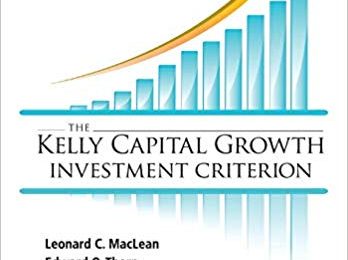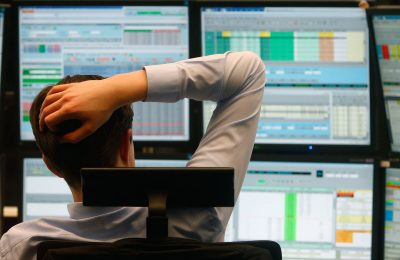Contents
https://bigbostrade.com/ improvement on an individual transaction is determined based upon the difference between the execution price and the NBBO at the time your marketable order is routed. The amount of price improvement per share may be less than the minimum quotation price increment . The average of best ask and an average of the best bid price will be taken as the ideal price of that security. High liquidity in a financial market is often caused by a large number of orders to buy and sell in that market.
The bid-ask spread benefits the market maker and represents the market maker’s profit. It is an important factor to take into consideration when trading securities, as it is essentially a hidden cost that is incurred during trading. The term “bid” refers to the highest price a buyer will pay to buy a specified number of shares of a stock at any given time. The termaskrefers to the lowest price at which a seller will sell the stock. In particular, they are set by the actual buying and selling decisions of the people and institutions who invest in that security. If demand outstrips supply, then the bid and ask prices will gradually shift upwards.
The difference between the bid price and ask price is known as the market’s spread, and is a measure of liquidity in that security. The bid price is the highest price a buyer is willing to pay for a security or asset. A bidding war occurs when many bidders compete for the same item and place bids one after the other.
What is the Bid Price?
When a bidder submits an offer even though the seller is not actively trying to sell, it is referred to as an unsolicited bid. A bid is usually lower than the offered price, also known as the “ask price’’, which is the price at which people are ready to sell. The bid-ask spread is calculated by subtracting the two values. Let’s look at quotes from various exchanges on shares of XYZ stock. Bid price is the highest price that a potential buyer is willing to pay for an asset or commodity.

All those who want to buy say the maximum price they’re willing to pay for a certain number of shares . The spread is always based on the last large number in the price quote, so it equates to a spread of 33 in this instance. It’s possible to base a chart on the bid or ask price as well, however. If someone wants to buy right away, they can do so at the current ask price with a market order.
The term “Trading Day” shall mean each Monday, Tuesday, Wednesday, Thursday and Friday, other than any day on which securities are not traded on any of the above mentioned exchanges or in such markets. The bid price and ask price are the two components of a two-way price quotation system, the norm in financial markets. The bid price represents the price a market participant offers to buy an asset, while the ask price is the selling price. Market makers continuously offer bid prices for trading instruments, which are generally lower than ask prices. The difference between bid vs. ask price is the spread and the profit a broker earns per transaction in a commission-free pricing environment.
Here is a bid/ask price example:
https://forexarticles.net/ makers earn money from client losses, where they present the direct counterparty to the transaction. The difference between the bid and ask price is called the spread. Bid-ask spreads can be as small as a few cents or larger than 50 cents or $1, depending on the security that’s being traded.
Somehttps://forex-world.net/s you will see the bids reloading where sellers are trying to take the bid out but new bids keep coming in to hold the price there. Following the bid size is important because it will tell you where big buyers are stepping in and at what price. If you know where the big orders are going in at then you know that is an important price level and something you will want to keep an eye one for a possible trade opportunity. New issues benefit from more liquid secondary markets because more investors are encouraged to trade at lower costs thus creating an active secondary market for the new securities. Buying or selling “at market” means you will accept “any” ask price or bid price for the stock, respectively. By solving this problem, online auctions reduce the transaction costs for bidders, increase the number of bidders, and increase the average bid price.
- Bid-ask spread is affected by a stock’s liquidity i.e., the number of stocks that are traded on a daily basis.
- The highest price that a buyer is willing to pay for a certain product or service is known as the bid price.
- In financial services, the term bid definitionis used to describe the collective action of a stockbroker placing a stake on a security, most notably, stocks.
- One important aspect to remember is that a market maker often places a bid price well below the price they seek, allowing for an upward adjustment to where they would like to buy the asset.
- If the current bid on a stock is $10.05, a trader might place a limit order to also buy shares for $10.05, or perhaps a bit below that price.
- This might appear like a compromise, and both the parties will try to find a mid-path and will agree at a price where they wanted to be.
Interest on capital was treated merely as a particular case under the general theory of price. The increased volume of the supply thus produced inevitably forces down the price till it sinks to the point of cost. Suppliers who are seeking to win a competitive tender go through a bidding process. In an economy, a market system is any systematic process that enables many market players to bid and ask.
4.Set the bid price so that the gross spread (i.e., underwriter compensation) equals the expected underwriter cost and the bid price meets the issuer’s objective. Therefore, a homogeneous time series of spreads s generated by interpolation contains a rather high level of noise. A more suitable alternative is to compute average spreads within time windows and to build a homogeneous time series of these average spreads. It is important to state that the bid definition is different from the asking price – often simply referred to as ‘ask’ or ‘asked’.
Monthly US Stock and Indexes Database Release
It is the opposite of an ask, which is the price that a seller will take in order to part with a financial instrument. The bid is the amount that your broker is willing to pay in order to buy a financial instrument. The last price is the most recent transaction, but it doesn’t always accurately represent the price you would get if you were to buy or sell right now. The last price might have taken place at the bid or ask price, or the bid or ask price might have changed as a result of, or since, the last price.

The difference between the bid price and the offer price is known as the spread, which is the cost that a trader will incur in order to open a position. In the context of stock trading, the bid price refers to the highest amount of money a prospective buyer is willing to spend for it. Most quote prices as displayed by quote services and on stock tickers are the highest bid price available for a given good, stock, or commodity. The ask or offer price displayed by said quote services corresponds directly to the lowest asking price for a given stock or commodity on the market.
The spread is also called the bid-offer spread, bid/ask or buy-sell spread. The bid size and the ask size often differ, depending on supply and demand and the overall order flow of an asset. For example, the bid size could be 1,500 at 75, while the ask side reads 5,000 at 77. Level 2for the SPY and as you can see the bid price is currently at $224.68 with the top bid showing a size of 100.
You’ll narrow the bid-ask spread, or your order will hit the ask price if you place a bid above the current bid . If the bid price were $12.01, and the ask price were $12.03, the bid-ask spread would be $.02. If the current bid were $12.01, and a trader were to place a bid at $12.02, the bid-ask spread would be narrowed.
4.1 Preemption and bid jumps
If a bid is $10.05, and the ask is $10.06, the bid-ask spread would then be $0.01. The bid-ask spread can be measured using ticks and pips—and each market is measured in different increments of ticks and pips. It is used when a trader is certain of a price or when the trader needs to exit a position quickly. The great Mr. Abrahams had an unlimited commission to secure at any price, a long list of great works.
Since bonds are traded in a decentralized, over-the-counter market dominated by dealers, there can be a lack of price transparency. A buy limit order can only be executed at the limit price or lower, and a sell limit order can only be executed at the limit price or higher. If the one person’s bid equals another’s ask price, they have found a price at which they’re both willing to do business, and the transaction occurs. The quantity of the financial instrument they are looking to purchase. The ask price, usually referred to as the ‘ask’, is defined as the minimum price that a seller is willing to accept for the instrument.